

(This post originally appeared February 8 on the author’s Switchboard blog.)
Yesterday, the Bureau of Sanitation for the City of L.A. released its recommendations for fixing the inefficiencies in L.A.’s waste system. After more than a year of careful consideration, the Bureau determined that an exclusive franchise system with 11 franchise zones for the commercial and multi-family sectors would provide the best solution to increasing recycling and minimizing the burden that waste collection imposes on L.A. residents.
As I have written before, the commercial and multi-family sectors are responsible for approximately 70 percent of the waste L.A. sends to landfills, so it is an important nut to crack to meet the City’s zero waste goals. I have written several blogs on this issue and on the benefits of going to zero waste ranging from reducing our dependence on polluting and space hogging landfills to reducing our greenhouse gas emissions to creating more jobs.
» Read more about: Big Step Taken to Resolve LA's Trash Crisis »


It’s not known if the Tea Party will ever be identified by one color, the way our two dominant political parties are. With red and blue already taken, it’s tempting to guess that the Tea Party would embrace – well, white. In any case, it won’t be green. Consider a February 4 New York Times piece, which spells out the tireless campaign waged by the movement against any legislation tilting toward a sustainable environment. Some of the laws vehemently contested include:
The reason for Tea Party opposition to these seemingly uncontroversial undertakings is a deep suspicion of an obscure and nonbinding United Nations resolution passed in 1992.
» Read more about: Tea’d Off! Why the Baggers’ Grassroots Aren’t Green »
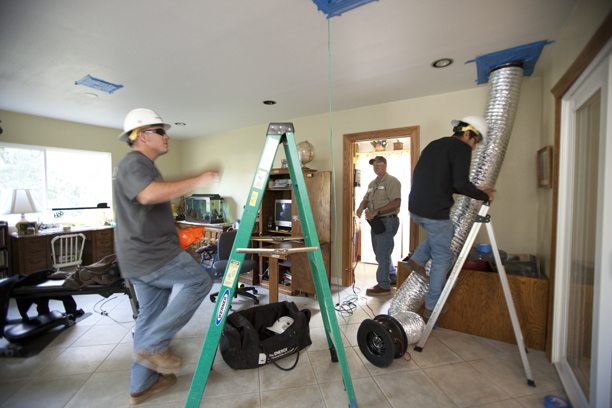

That was the unlikely message to emerge from a series of town halls that have been held around the city over the last few months hosted by RePower LA, a new citywide coalition. From East and South L.A. to the Valley and the Westside, environmentalists, business owners and young people in need of jobs have sung the praises of energy efficiency.
Why the commotion? It’s over the promise and potential of making the LADWP, the nation’s largest municipally owned utility, a leader in energy efficiency. Energy efficiency programs can keep our bills low, saving businesses and residents hundreds or thousands of dollars a year. They also provide local jobs. And they can help wean us off our reliance on dirty energy sources that pollute our air and threaten our health.
Thousands of Los Angeles residents and businesses want the LADWP to invest in a sustained manner in programs that make our homes and businesses more energy efficient and create good jobs,
» Read more about: LA and Energy Efficiency: Less Is Way More »
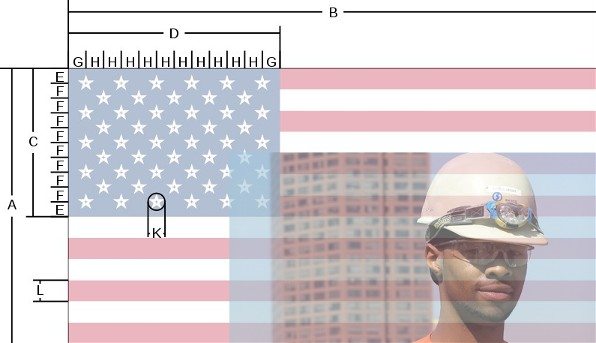

(Note: Phaedra Ellis-Lamkins’ post first appeared yesterday on Green for All.)
America is not used to playing catch-up, not since World War II. We’ve built a massive, unparalleled economy through an always-evolving blend of entrepreneurship, public and private investment, and innovation.
We still lead the rest of the world, but we’ve slowed. Stumbled. Meanwhile our competitors are picking up speed – particularly in key sectors that promise long-term growth.
President Obama is presenting his [third] State of the Union address tonight, at the outset of a year that will culminate with a fiercely contested battle for his position. It may be the President’s last opportunity to establish the agenda that America needs in order to be competitive over the long term – while putting people to work immediately.
It is a moment for boldness – a time at which the President can outline a plan of action that shifts America’s focus to the future,


On October 12, 2011, in Lamont, California, Armando and Eladio Ramirez went into a composting drainage pipe, wearing only painters’ masks for protection – and breathed in fatal amounts of hydrogen sulfide. Armando, 16 years old, went in first to clean out the pipe, and died almost immediately; Eladio, 22, went in after his brother to help him, and was rendered brain dead, dying the next day.
These deaths happened at a green waste processing facility run by Crown Disposal Services – a prominent player in L.A.’s commercial waste and recycling market – and are being investigated by Cal-OSHA, the CA Department of Labor and the United States Department of Labor.
Several weeks after Armando’s and Eladio’s deaths, a group of recycling sorters, waste hauling drivers and helpers filed a formal complaint with Cal-OSHA, chronicling a litany of severe health and safety violations taking place at American Reclamation, a waste and recycling company in Atwater Village that also plays a significant role in L.A.’s commercial waste and recycling industry.
» Read more about: Death and the Waste Industry: A Call for Action »


Two hundred and thirty six years ago, in January 1776, Thomas Paine published Common Sense, the wildly popular pamphlet that made the case for American freedom and helped to spark a revolution.
This year, the Tea Party hopes to turn the 2012 elections into a fight for American freedom. Their first salvo — the electric light bulb. Last month, they threatened to shut down the government unless new energy efficiency standards for light bulbs were delayed. They didn’t delay the standards but they succeeded in delaying their implementation. The final budget deal prohibits the Department of Energy from spending any funds on the new rules.
In 2007, Congress passed The Energy Independence and Security Act that included a provision authored by Republican Congressman Fred Upton giving light bulb manufacturers until 2012 to produce light bulbs that used 25 percent less energy than old-fashioned, energy wasting incandescent bulbs.
» Read more about: Dim Bulbs: Tea Party Rages Against the Light »
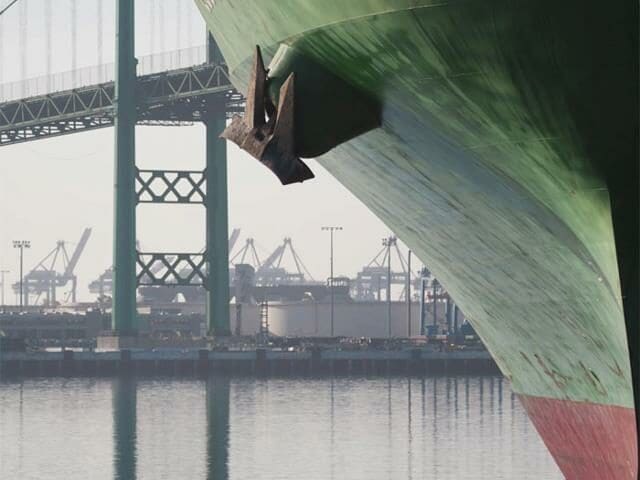

In recent weeks the more poetically inclined of us at Frying Pan News have borrowed inspirations ranging from Doctor Seuss to Clement Clarke Moore to express their hopes for the environment and the economy. Now, Jessica Goodheart and Trebor Healey borrow a leaf from Bashō and squeeze green sentiments into a trio of haiku.
(Photo credits: Port of L.A., Brian Ferguson, Louise Rosskam)


My wife and I are bird nuts. Our weekends are spent hiking around the hills of Los Angeles with binoculars in hand. I have a somewhat louder jaunt and am sometimes given a scowl from Christine if I unintentionally flush a bird from its tree before either of us can get a good look. She’s a much better birder. She’s quiet and aware. She knows the calls, the chirps, trills and quacks.
“Listen to that goldfinch,” I’ll tell her.
“You think that’s a goldfinch?” she’ll smirk. We argue about the call until a scrub jay flutters out of the tree in front of us. As I say, she has a really good ear.
My fascination with birds started with the condor — the largest flying land bird in North America and one of the world’s most highly profiled endangered birds.
In the mid ’80s my Dad’s cattle ranch outside of Glennville,


(Editor’s Note: In the holiday spirit we present this enlightening poem — with a tip of the hat to Dr. Seuss. Please click on the link for the stanza layout.)
All the Las
Down in La-ville
Liked Christmas a lot…
But the Snitch,
Who lived just North of La-ville,
Did NOT!
The Snitch hated Christmas! The whole Christmas season!
Now please don’t ask why, ‘cause we all know the reason.
What made that old Snitch-man so mean and so sour
Was the way all the Las used up holiday power.
They used it on parties. They used it on shows.
They used it to light up a young reindeer’s nose.
But what made the old Snitch really put up a fight
Was the excess they used on their holiday light.
How he hated the blinking!
» Read more about: A Christmas Snitch Sees the Light (LEDs, That Is) »


As a first-time parent of a two-year-old child I am now more convinced than ever that environment plays a major role in how we develop as humans. Not that I did not believe this prior to being a father, but nothing other than environment serves as a plausible explanation for some of my son André’s behaviors that neither my wife nor I can even begin to comprehend.
One of those behaviors is, ironically, his utter infatuation with trash trucks. I say ironically not only because neither my wife nor I nor any close relative care much for trash trucks but also because I happen to be the community organizer for Don’t Waste LA. Started last year, Don’t Waste LA is an effort to reform the commercial and multi-family waste industry in Los Angeles in a way that will, among other things, reduce trash truck traffic in the city. So trash trucks are not all that exciting to my wife and me,

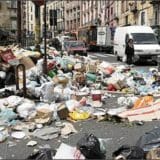
Every few days I drag my trash and recyclables out to the big gray dumpster and blue bin in the back of my apartment complex. The materials get picked up, the bins emptied, and they’re out of sight and out of mind. But where does it all go? Few of us actually know where our piles of trash and recyclables end up, with whom they come into contact and whom they impact along the way. While it may seem as though our trash magically disappears each week after the point of collection, it often ends up burned or buried near schools or homes in our city – or it may take a long journey, ending up outside of our communities, regions, state or even country.
The first step in raising our consciousness about our trash problem is to track where our waste goes. Trash | Track, a project out of MIT that builds on previous work of the SENSEable City Lab and is inspired by the NYC Green Initiative,
» Read more about: On the Trail of Trash: Tracking Our Disposable Society »


Recycling may be all the rage these days, but here in L.A. and across the country vast amounts of recyclable goods end up in landfills every year.
Turns out we’re throwing away a lot more than bottles, cans and newspapers. Here’s why: recycling equals jobs.
The recent report More Jobs, Less Pollution: Growing the Recycling Economy in the U.S., commissioned by the national Blue Green Alliance and prepared by the Boston-based Tellus Institute, builds a compelling case for thinking twice before throwing that old carpet into the trash. According to the report, increasing the national diversion and recycling rate to 75 percent by 2030 would create over 2.3 million new jobs.
Reuse and recycling — from collection to processing and manufacturing — is much more labor intensive than landfilling and incineration. Take all of those aluminum cans you redeemed this year,
» Read more about: Throwing Away Jobs: How More Recycling Could Boost the Economy »


When my parents started to work longer and longer hours to support their five kids, they sat me down and told me I had to start taking the bus to school. At 11 years old, this was the best news I could have imagined. Yes, I had to wake up at 6 am to get ready for school and catch the 212 and 33 bus lines, but that sense of independence I got from being able to “roam” around the city was priceless. (Well, almost…if you don’t include the price of a bus pass.) I learned to take the bus to Hollywood, the Montebello Mall, Santa Monica — places that seemed so far away from home in South LA.
It wasn’t always fun, of course: I have many memories of sitting at the La Brea/Venice bus bench for 45 minutes trying to catch the Line 212 after a long school day. I eventually learned to cope by reading a lot,
» Read more about: Mass Appeal: LA’s New Embrace of Public Transit »
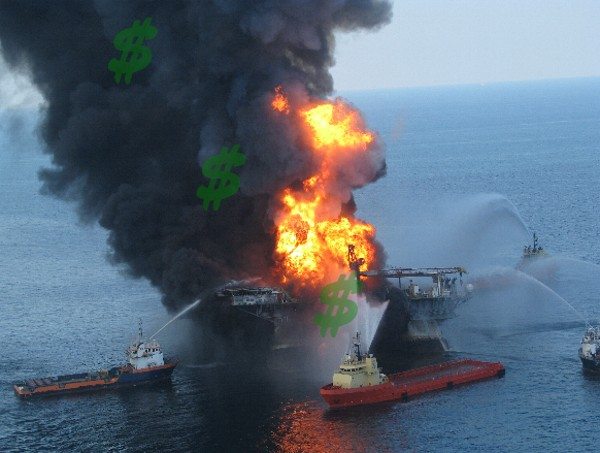

Though I deal with economic issues all day, I am not an economist and I have no formal economic training. That’s one of the reasons that I really like NPR’s Planet Money podcast. Yes, it has a little too much of a free-market bent for my tastes, but it does a very good job of explaining basic economic issues in lay language and, even more important, it is intellectually honest (which you can’t say about some key business media).
Planet Money recently aired a provocative episode called “Will economic growth destroy the planet?” Their jumping-off point was ostensibly the (purported) trade-off between economic and environmental health, but I found the real lesson in an important insight about how economists think and talk.
Let’s assume that we all agree that economic growth is a good thing. Almost every day, we see some headline or another touting the promise of a government policy or tax incentive or corporate investment to create jobs,
» Read more about: Learning How NOT to Talk Like an Economist »


Energy efficiency building upgrades have been widely hailed as the low-hanging fruit of the clean energy sector, easy pickings for energy savings that can help jump-start the green economy through job creation and cost savings
But what IS an energy efficiency building upgrade (or retrofit, as it is sometimes called)?
Buildings are improved so that they use less energy and are more comfortable, but without requiring anyone to change their behavior. Think about it: with old, poorly insulated buildings, we are basically paying to heat or air-condition the outdoors. With inefficient heating, cooling, or lighting systems, we are doing something equivalent to burning a paycheck right next to our appliances.
Here’s how an energy efficiency building upgrade works: Typically, a building is first inspected by an energy “auditor” (a horrid word – having an “auditor” come in before a “retrofit” sounds like someone from the IRS is prepping you for a particularly nasty medical procedure – but those are the terms).
» Read more about: How to Save Money (and the Earth) While Keeping Your Bad Habits »


If you’re not a subscriber, I guess you’ll have to pay for access to this recent New Yorker piece, but it is well worth it. Evan Osnos took a look at Japan and the Fukushima nuclear meltdown seven months after the terrible tsunami destroyed so many lives and very nearly killed many more.
This is compelling writing and reminds me of something I’d forgotten—hadn’t we all agreed that nuclear disaster was a real and legitimate fear again, and change was needed? What happened?
The article raises a theory that resonates. In a long section in the middle of the piece detailing the history of nuclear power in Japan, Osnos notes that post-Chernobyl Japanese officials actually became less safe and at the same time more assertive of the safety of nuclear power.
The idea was to defend the industry against attacks by distinguishing the practices in Japan from those in the USSR,
» Read more about: Eating Blinky: Nuclear Power Safety Jitters »


I am particularly fond of Kenny Rogers’ song “The Gambler.” At a recent hearing for the Los Angeles City Council Ad Hoc Committee on Waste Reduction and Recycling, I kept thinking about this song as I heard many business groups and trade associations lobby against true reform of L.A.’s waste collection system.
The debate stems from how the City of L.A. should reform its system for dealing with waste at businesses and large apartment buildings. On one end, you have the Don’t Waste L.A. coalition, to which I belong through the Natural Resources Defense Council. It is a broad coalition of environmental, community, faith-based, economic justice and labor groups, advocating for a comprehensive solution to dealing with L.A.’s waste woes, instead of kicking the can down the road. You can read more about the coalition’s positions here and here. On the other hand, some business lobbying groups and trade associations are advocating for a system that keeps the status quo in place.
» Read more about: Let’s Not Gamble with Los Angeles’ Garbage »
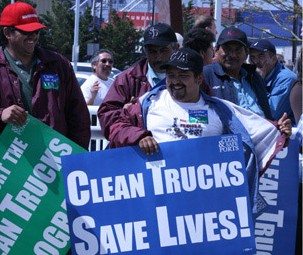
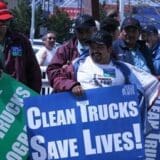
For years, NRDC, working with allies in labor, have disproved the myth that environmental protection and good jobs can’t co-exist. We are not alone in this: NRDC, Sierra Club, National Wildlife Federation and Union of Concerned Scientists are members of the BlueGreen Alliance, which also includes the Steelworkers, United Auto Workers, SEIU and other national and international unions representing tens of thousands of members.
NRDC has focused particularly on promoting the new clean energy economy which brings with it good-paying, local jobs in the manufacturing, construction and service sectors. We have seen this in California where the clean energy sector is growing faster than any other sector, accounting for over 90,000 in Los Angeles area alone. This is apparently news to the Los Angeles Times. In a misguided editorial on the recent Ninth Circuit ruling in the Port of Los Angeles clean trucks case,
» Read more about: Wake Up, L.A. Times, It’s a Blue-Green World »


Across the country critics of the Obama administration’s multimillion-dollar support for Northern California’s Solyndra solar panel factory are railing against government stupidity. How is it possible, they ask, that federal and state governments could have invested hundreds of millions of taxpayer dollars in a company that went belly up? Why didn’t the officials take more precautions, do more research, put in place more safeguards? How could they have been so dumb and so wasteful of precious government dollars?
But really, what the conservative Obama critics are saying is that the federal government and states such as California and Wisconsin that invested millions in the company should have had more bureaucratic red tape. Yes, that most hated of terms, “red tape” is something that could have actually prevented a huge loss of government dollars in an unwise investment.
Extreme right-wing conservative Wisconsin Congressman Paul Ryan said it well in an article this week on Fox.com:
.

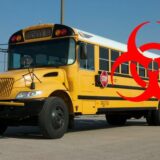
You hear a lot of talk about measuring student performance in public schools, but it’s a little known fact that schools themselves are also graded for their performance, when their infrastructures score well on operating costs and the efficient use of resources. At the top of this honor roll are high performance facilities known as “green schools,” which are built or renovated in ways that protect the environment, improve the health of students and educators — and save money over the long run.
Upgrading schools can also create new jobs, which we need now. According to 2008 Congressional testimony, a pair of state bond cycles that spent $10 billion on California school construction generated more than 175,000 jobs — and created an additional $20 billion of economic activity in their wake. That same testimony cited similar economic spikes, suggesting that long-term benefits are a virtual given for school infrastructure investments.